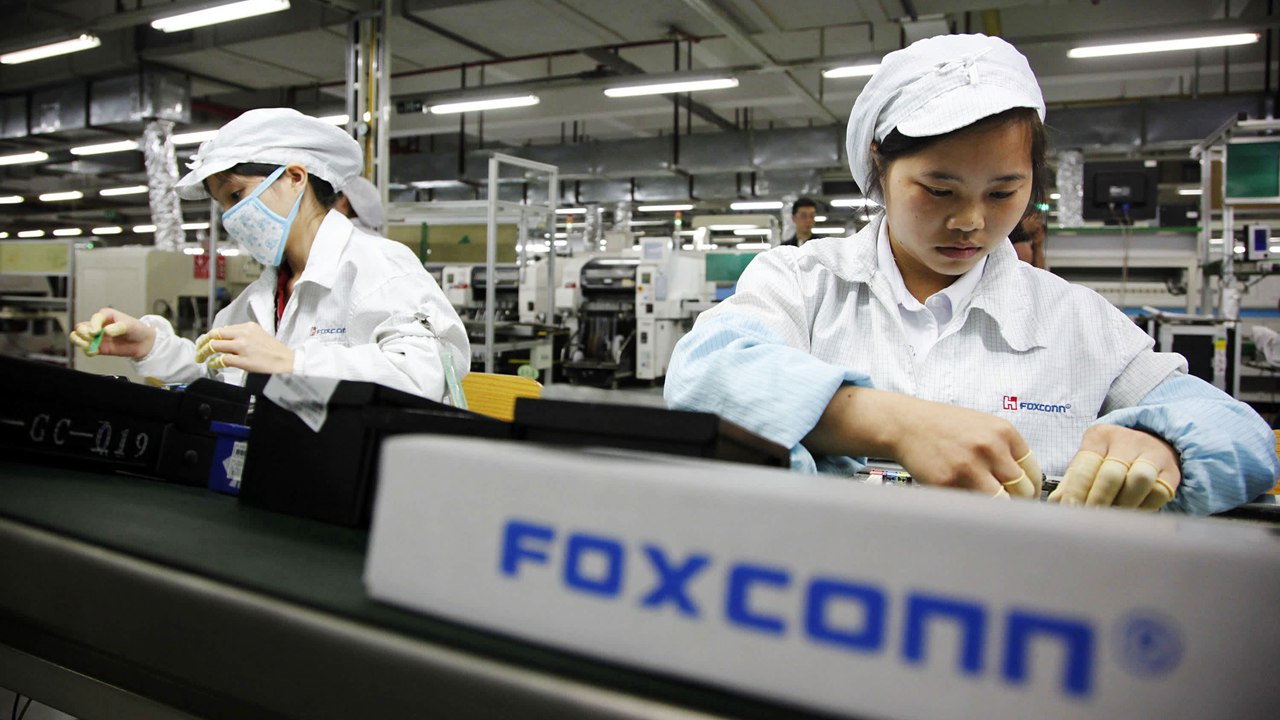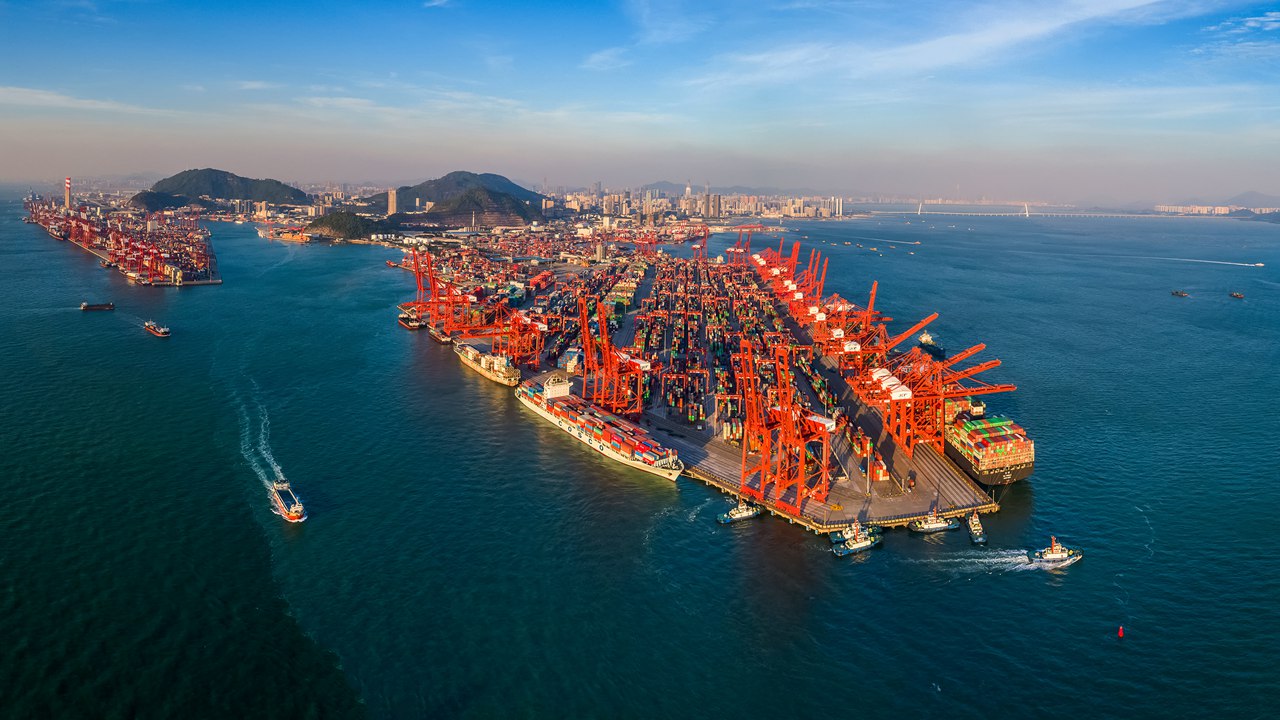SZ shows efficiency, resilience in ensuring supply chain flows
Following a weeklong pause that has effectively helped contain the spread of COVID-19 in Shenzhen, all of the city’s sectors are ramping up efforts to make up for the loss of time and safeguard global supply chains, with the city government rolling out a slew of supportive and adaptive measures, manufacturers accelerating production and logistics companies speeding up shipments.
Major economic indicators such as power use showed Shenzhen’s economic activities have resumed to normal levels, demonstrating the city’s efficiency and resilience in responding to uncertainties and emergencies.
Production
Foxconn, the world’s biggest contract electronics manufacturer, has resumed normal work order and production operations at its Longhua and Guanlan factories, while implementing epidemic prevention and control policies.
Foxconn Industrial Internet Co., a subsidiary of Hon Hai Precision Industry Co. and a manufacturer of communication network equipment and industrial robots, can make up for the shutdown losses within one or two weeks by accelerating production, Shenzhen Economic Daily quoted CEO Zheng Hongmeng as saying Friday.

Staffers work in the workshop of Foxconn in Longhua District. File photos
Huawei told Shenzhen Special Zone Daily that it received the greenlight from the city government allowing it to transport materials between its locations in Shenzhen, Dongguan, Huizhou and Hong Kong, ensuring the tech giant’s smooth supply chain.
Hitachi Global Storage Technologies (Shenzhen) Co., located in the Futian Bonded Zone, is one of the world’s largest suppliers of hard disk drives and its products support the manufacturing of 36% of hard disks produced worldwide. After resuming production, the company, in one case of its order fulfillment, shipped 600,000 pieces of hard disk drivers worth more than 12 million yuan (US$1.88 million) to Thailand via rail.
Bone conduction headphones pioneer Shokz, headquartered in Bao’an District, said the company has been working against the clock to meet the demand and fulfill orders after resuming production.

Headphones developed by Shokz.
Some of the manufacturers engaged in businesses essential for worldwide supplies even didn’t suspend their production.
New Industries Biomedical Engineering Co. (Snibe) in Pingshan District has its over 1,300 staff members live and work in a bubble to maintain normal production throughout the latest COVID outbreak.
Snibe, a biomedical company specializing in clinical laboratory instruments and in vitro diagnostic reagents, provides products to over 7,700 medical institutions in China and exports to 147 countries and regions.
“In order to ensure the testing services carried out by over 20,000 medical institutions around the world, our company overcame difficulties and kept our production lines operational,” said Ding Chenliu, Snibe’s deputy general manager.
TCL Huaxing, a subsidiary of TCL Technology Group Co. and a semiconductor materials giant that links nearly 1,000 other companies in the sector’s upstream and downstream industrial chain, also kept half its employees working in a bubble on its Shenzhen campus to ensure all its production lines operational during the lockdown, said Qin Weiwu, deputy head of the company’s public relations department.
Raw materials ran out at the factory once, but government agencies soon helped it find a way out by giving the greenlight to 100 trucks to transport materials the company needed.
BYD Corp., which also kept up production at its 66,000-square-meter Shenzhen factory, has delivered 66,000 tablets worth US$25 million as scheduled.
Shenzhen KTC Technology Co., a “little giant” enterprise known for its innovation capacities and development resilience, and a supplier of display panel terminal products used for commercial and medical purposes, proceeded with not only its normal operations in Bantian, Longgang District, but also its initial public offering as scheduled, with its shares starting trade on the Shenzhen Stock Exchange’s main board March 18.
Logistics
Shenzhen Port, a collective name for several container terminals along the city’s coastline, plays an important role in global trade. It accounted for 28.8 million twenty-foot equivalent units (TEUs) or 11.5% of China’s maritime container handling in 2021, according to official data. Based on the 2020 data, the city’s 26.5 million TEUs account for 3.5% of the total 758 million TEUs in global shipping, according to World Bank data.
Yantian Port, the world’s fourth-busiest container port that processes roughly 90% of China’s electronics shipments, remained open throughout the latest COVID resurgence. It had been operating at full capacity for five straight days since March 21, with all berths being occupied, according to a Shenzhen Evening News report.

The Dachanwan port container terminal in western Shenzhen put into use a new container yard with a capacity of 20,000 TEUs in mid-March.
To ensure the terminals’ ability to process shipments, the city’s transportation bureau opened green channels for container trailers to operate in and out of the city, among other measures to facilitate sea, air and rail freight.
As a result, Shenzhen Port maintained a daily container handling capacity of 64,000 TEUs in March, with an average of 132 vessels being berthed and over 20,000 container trailers operational on a daily basis.
To clear the way for exports and imports by air, Shenzhen Bao’an International Airport coordinated with airlines and freight forwarding companies to operate additional cargo flights, with delivery giant SF Holding adding six extra cargo flights a week between Shenzhen and Hong Kong. SF started the additional service in mid-March and will not withdraw it until April.
Flexible government policies lent support to logistics firms, according to them. Liu Congjun with Kintetsu Logistics (Shenzhen) Co. said meticulous government policies that adapt to different companies and different industries enabled it to operate smoothly. Logistics firm YH Global said it is confident to recoup the loss of time under government guidance and with the help of digitalized logistic solutions.
Roughly 93% of logistics firms in Shenzhen have applied technologies including digitalization and automation to their daily operations in the past year to save costs and improve efficiency, according to a survey of Shenzhen Logistics and Supply Chain Management Association.
Flexport, a U.S. freight forwarder that employs over 300 workers in Shenzhen, moved nearly US$19 billion of merchandise across 112 countries and regions in 2021, with 80% of them coming from China. Its strength in technology application and research has helped it navigate the change and uncertainty it faced.
“We design our technology to empower clients in many ways. But one of the things that became especially valued this past year was the ability for businesses to run their supply chains from anywhere — particularly when COVID hit,” said Flexport chief technology officer James Chen. “In fact, when companies were forced to switch to work-from-home operations, our digital platform use went up 21%.”
Future
“In the past three decades, supply chains were aimed at lower costs and higher efficiency. But now, against the backdrop of the pandemic, more attention has been given to supply chain security,” said Wang Guowen, head of the logistics and supply chain research center of China Development Institute, a think tank based in Shenzhen.
“How to build more resilient and secure supply chains is a challenge faced by both manufacturers and logistics firms,” Wang said.
Zhao Jian, head of Atlantis research institute, said technologies like industrial internet and digitalization will be crucial means to strengthen supply chains, make it smarter and more resilient, and help mitigate the economic impact of COVID-19.
“Amid global logistics woes, establishing overseas warehouses is also a way to stabilize supply chains and will play a significant role in safeguarding industrial and supply chains and helping Chinese companies go global,” said Mei Guanqun, a researcher from China Center for International Economic Exchanges.
Having overseas warehouses helps Chinese businesses get their goods to foreign buyers more quickly and cheaply, according to Mei. Instead of shipping products only after a customer places an order, firms can dispatch their wares directly to overseas warehouses, clearing the customs process even before orders are made.
Chinese companies have set up over 2,000 overseas warehouses, doubling the 2019 figure, according to the Ministry of Commerce. Shenzhen’s 4PX Express has established 40 overseas warehouses in 16 major countries by the end of 2021, with a total area of nearly 1 million square meters. It is currently preparing to upgrade its overseas warehouses with automation and digital technologies. Goodcang, based in Shenzhen’s Longgang District, has opened new warehouses in Thailand and South Korea this year, with its old ones operating in Japan and Australia.
With all factors considered, analysts say Shenzhen’s lockdown impact on global supply chains is very limited. “The seasonal nature of exports of some of the consumer products produced in Shenzhen and the surrounding region means manufacturing for delivery into the Western holiday season will scale up from April onwards,” Chris Rogers, a supply chain economist from Flexport, wrote March 16. “An early end to the lockdowns may therefore prove critical in avoiding supply chain and inventory disruptions later in the year.”